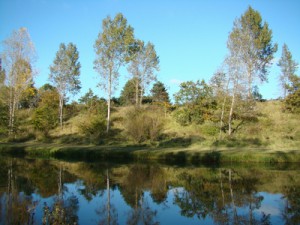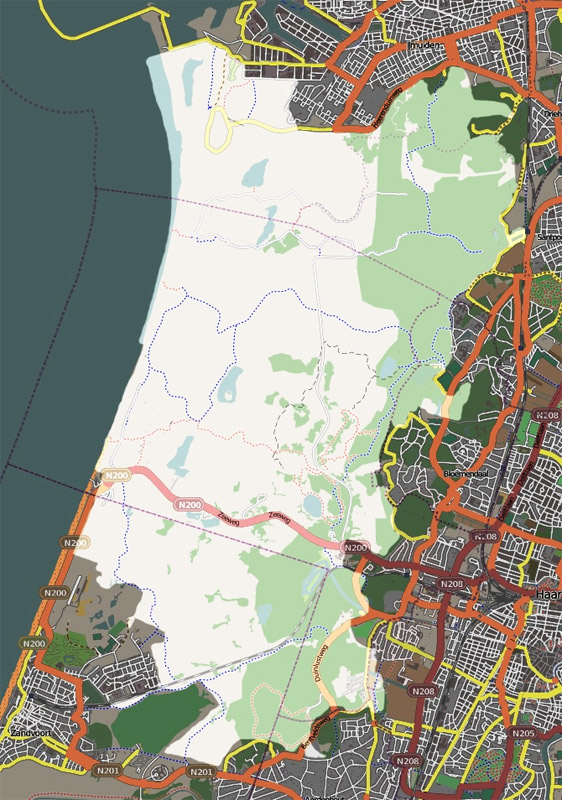The dunes along the coastline of The Netherlands serve 2 purposes – for defence against the sea and as designated nature reserves.
The 2 Main Areas of Dunes
The Amsterdamse Waterleidingduinen to the South

This area of dunes is situated between Zandvoort (North-Holland) and the Langevelderslag in Noordwijk (South-Holland).
The dune area was created for the extraction of drinking water for the city of Amsterdam with 50 million m³ of drinking water flowing from this 3400 hectare area per year. It is the oldest water extraction area in the Netherlands and water has been extracted from these dunes since 1853. The dunes have the largest deer population in the Netherlands. It was estimated that in 2011 there were about 2,000 deer roaming there which is a ratio of approximately 0.6 per hectare. For several years now the hunting of these dear has been prohibited and so the numbers have increased considerably. Sometimes this has caused problems with collisions with cars but the authorities have erected fences and this has helped the situation a lot.
Photos of the Wildlife in this area
The Zuid-Kennemerland National Park to the North

The Nationaal Park Zuid-Kennemerland is a national park established in 1995 and located in the province of North Holland, to the west of Haarlem, within the municipalities of Bloemendaal, Velsen and Zandvoort. The Kennemerland region, to the south is also included in this. The park was established in 1995.
The area is characterised by sand dunes and is almost 40 square kilometres in size. It also includes forests on the edge of the dunes and coastal beaches. The area used to supply water to the city of Haarlem but this was stopped in 2003 to allow the groundwater bubble to grow again. On the road between Bloemendaal and Zandvoort, there’s a small public swimming area at a location known as the Wed which opens in the summer. There is a visitors centre at Zeeweg 12 in Overveen which goes by the name of De Kennemerduinen. In recent years the park has had almost 2,000,000 visitors per year.
With many kilometres of pathways and cycle tracks (some paved, some unpaved) these dune areas are popular with cyclists and walkers. They offer great recreation and also the opportunity to study flora and fauna and birdlife. There are over 200 species of bird inhabiting these dune areas including sea eagles and crossbills. The mammals fallow deer, roe deer, squirrel, West European hedgehog, European rabbit and red fox live in the park. Also, nearly 20 butterfly species have been observed. All in all, wonderful areas of recreation.